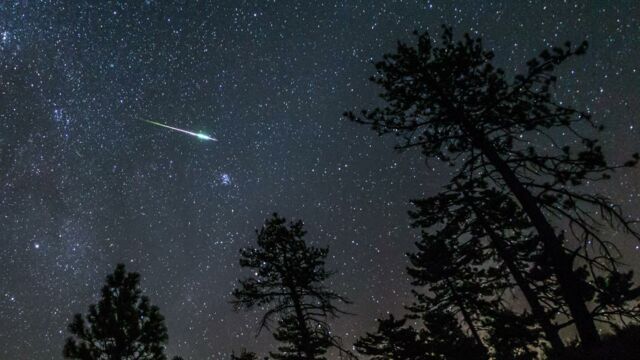If you are just getting into astronomy, you may have already watched a few meteor showers. If that is the case, you may not know what these showers are exactly. If you don’t that’s fine, we all have to start somewhere.
Discover our latest podcast
A basic definition
Britannica defines a meteor shower as a:
Temporary rise in the rate of meteor sightings, caused by the entry into Earth’s atmosphere of a number of meteoroids at approximately the same place in the sky and the same time of year.
NASA offers a slightly easier definition of a meteor shower:
A meteor is a space rock—or meteoroid—that enters Earth's atmosphere. As the space rock falls toward Earth, the resistance—or drag—of the air on the rock makes it extremely hot. What we see is a ‘shooting star.’ That bright streak is not actually the rock, but rather the glowing hot air as the hot rock zips through the atmosphere.
So in simple terms, a meteor shower is a yearly event when space rocks enter our Earth’s atmosphere and because they are going so fast, they leave a little white stream behind them.
Where do they come from?
As reported by The Guardian, meteor showers are debris from comets ‘which have long orbits around the sun.’ So when Earth comes within the path of a comet’s orbit, we can see its debris - and often without the help of a telescope.
Prof Orsola De Marco from Macquarie University said, as reported by The Guardian:
It’s like when you are driving your car through a cloud of insects – you get them all in your windshield.
How do meteor showers get their names?
You may have noticed that meteor showers often have unusual or fun names. The ones that have occurred so far are Eta Lyrids, the Eta Aquariids, the Tau Herculides, the Bootids as well as the Piscis Austrinid and the Gamma-Draconid.
Well, according to NASA, meteor showers get their names from constellations. This doesn’t mean that they come from these constellations as we explained above.
Indeed they are named after the constellation that is closest to the meteor shower when it appears in the sky.
Read more:
⋙ NASA reveals deepest image of the universe from new space telescope















